
views
- Fill the mortar ⅓ of the way full with spices or ingredients, steading it with your non-dominant hand and holding the pestle in your dominant hand.
- Bring the rounded end of the pestle down on the spices in the mortar firmly, crushing the ingredients between the mortar and pestle.
- Roll and rock the pestle against the mortar with firm pressure to grind the spices. If the contents slide up, push them back down into the mortar's center with the pestle.
The Right Way to Use a Mortar and Pestle
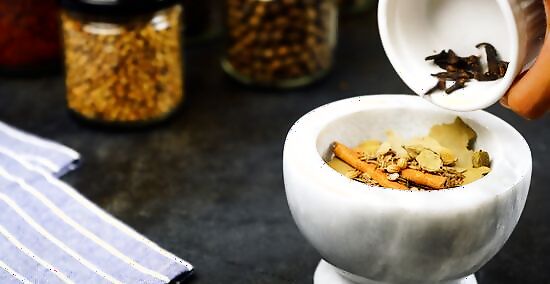
Place your raw ingredients in the mortar. Measure out your whole spices and place them in the mortar (or the bowl part of the tool). Fill the mortar no more than ⅓ full with raw spices; otherwise, it can be difficult to get an even grind. If you have too much to fit, process the spices in batches.

Press the pestle against the spices to grind them to a desired consistency. Hold the mortar in place with one hand. Then, take the pestle (the stick-like part of the tool) in your opposite hand and press the rounded end down on the spices. Roll the pestle against the mortar while applying firm pressure until you reach your preferred consistency. This technique is ideal for most spices you’ll use in baked goods and sauces. Grind the spices to a coarse, medium, or fine consistency.

Pound and bash large or tough spices and seeds. If your ingredients are too tough to grind right away, gently pound the pestle into the mortar to help release their flavors. Use the broad end of the pestle and bring it down gently but firmly. Use short, sharp hits to speed up the process and conserve your energy. Once most of the ingredients have been crushed, a little muddling may help finish the crushing. This technique helps crack the spices and/or ingredients so they’re easier to grind into a finger consistency. To avoid mishaps, cup your other hand (or a small cloth) over the top opposite side of the mortar and pestle to catch bashed items that try to bounce out.
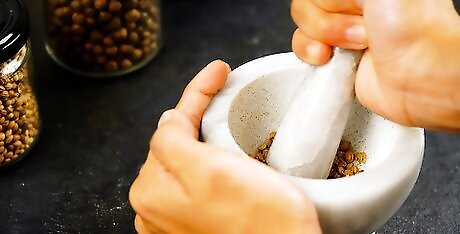
Roll the pestle across the mortar to roughly crush spices or garlic. If your recipe calls for crushed rather than ground spices, the spices shouldn't be completely pulverized. Instead, you want to keep them mostly intact. Simply roll the pestle across the ingredients so they crush and burst to the ideal consistency. This technique is suitable for processing garlic.
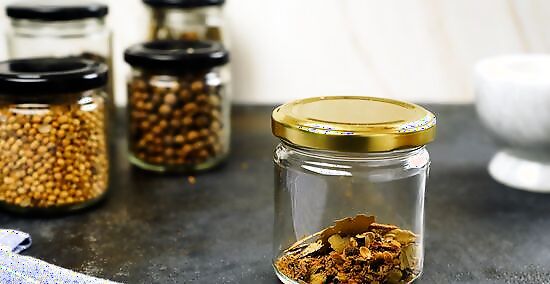
Store or measure out your ground or crushed ingredients. You can either place the freshly ground contents of the mortar into a glass spice jar with a tight-fitting lid or go ahead and measure out how much you need for your recipe.
What to Make with a Mortar and Pestle
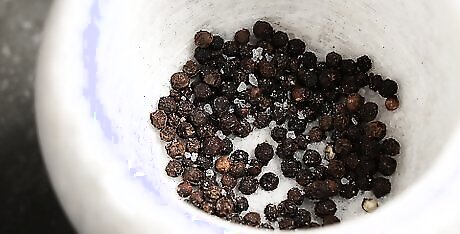
Grind and store spices and herbs. A mortar and pestle was originally designed for grinding spices. Why go to the store to buy a spice blend when you can make your own? Simply toss your favorite herbs and spices into the mortar and grind or crush them to your desired consistency. Grind sea salt and black pepper together to make your own salt and pepper mix. Blend toasted fennel seed, coriander, and cumin for a savory seasoning for meats and veggies. Crush cardamom, cloves, cinnamon, and black pepper for a spicy and smoky blend.

Whip up some crushed garlic in a flash. If you’re tired of finely chopping garlic, the mortar and pestle will be your best friend! This kitchen tool is perfect for crushing or grinding up garlic into small pieces, making it perfect for sauces, soups, and pasta dishes. You don't even have to remove the garlic skins first. Just roll over the cloves with the pestle to pop the skins right off.
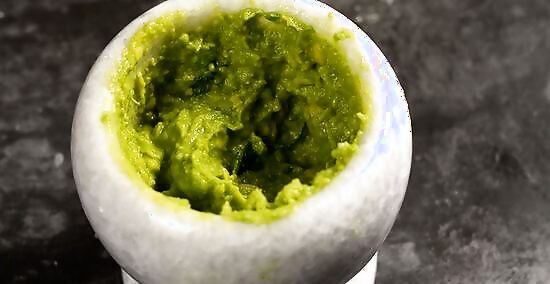
Make fresh guacamole. Use a large mortar and pestle to crush up an avocado with lime juice, chopped onion, and cilantro slivers. Simply toss all your favorite guac ingredients into the mortar and smash them together. And you know what’s the best part? You can eat the guacamole right out of the mortar! Similarly, you can also make salsa with a mortar and pestle by crushing tomatoes, onions, garlic, and jalapenos together.

Add some zest to your next pasta dish with homemade pesto. All you have to do is grind pine nuts into a paste and then crush in a clove of garlic, a handful of basil leaves, grated cheese, and olive oil. Pulverize the ingredients together until they reach your desired consistency.
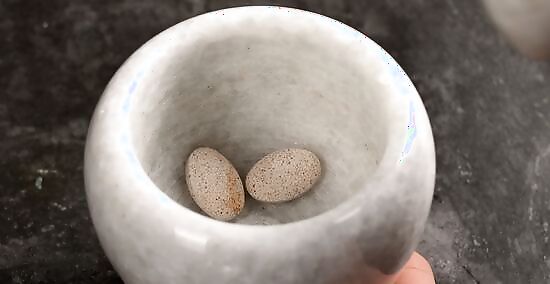
Crush pills so they're easier to take. If you, your child, or your pet have a hard time swallowing pills, use a mortar and pestle to crush your medications into fine powders. Simply place the pill in the mortar and gently pound it into a fine powder with the pestle. Then, dump the powder into some applesauce or other food of your choice. This method works best on hard pills without an outer coating. Avoid crushing capsule medications.
Caring for a Mortar and Pestle
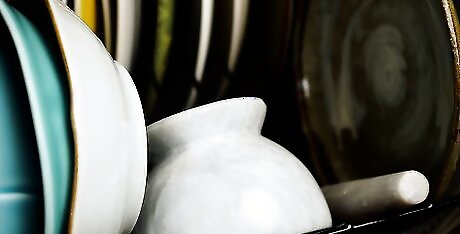
Clean your mortar and pestle after each use. How you clean a mortar and pestle depends on the material it’s made of. Check the instructions that came with your mortar and pestle to ensure you clean it properly. Here are some broad tips: If you have a wooden set, don’t submerge it in water or put it in the dishwasher. Instead, wipe it clean with a damp cloth and let it air dry. If you have a ceramic or stone set, rinse the tools with water and use a hard brush to scrub away hardened food. For a dishwasher-safe mortar and pestle, simply place it in a regular dishwasher cycle. For a dry grind, brush the mortar out with a clean cloth or paper towel.
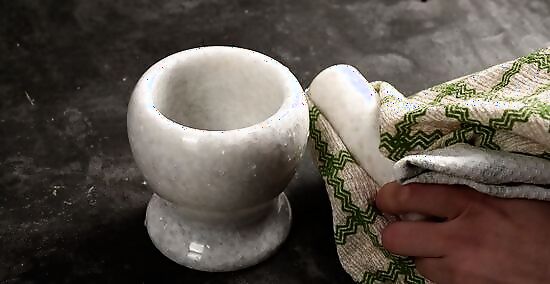
Dry your mortar and pestle thoroughly. Because mortar and pestles are often made of porous materials, it’s best to ensure they’re completely dry before putting them away. Use a clean dish towel or rag to get rid of any excess moisture after washing. Then, air dry both parts of the tool on a dish rack. Excess moisture in or on a mortar and pestle can cause it to crack or grow mold.
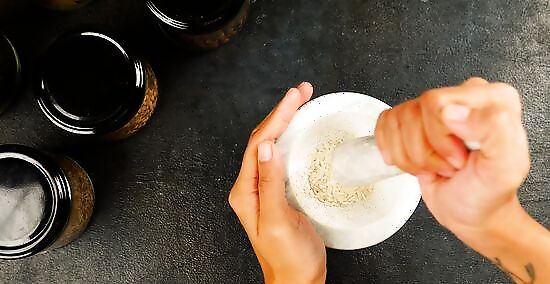
Try using dry rice to eliminate smells and stains. Sometimes, it's difficult to remove smells and stains from strong spices. A good trick is to pour some dry white rice into the mortar, then use the pestle to grind it finely. The rice will likely take on the color and smell of the last spice you processed. Discard the rice, then repeat the process until the ground rice remains white and odor-free after the grinding.
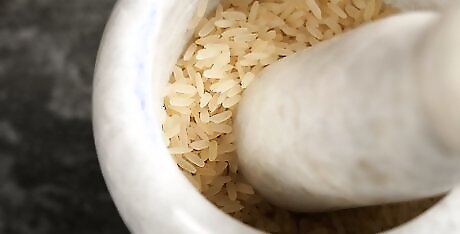
Season a new mortar and pestle with rice and your choice of spices. Seasoning or curing a mortar and pestle makes the surface of the tool smoother and helps prevent staining. Cover the bottom of the mortar with rice, then grind the rice with the pestle, making sure to grind all sides of the mortar, until the rice turns into a fine powder. Dump out the rice flour and repeat the process with herbs and spices for additional aromatics. Try crushing cumin seeds, rock salt, and black pepper to season the mortar with rich, neutral flavors.
Choosing a Mortar and Pestle
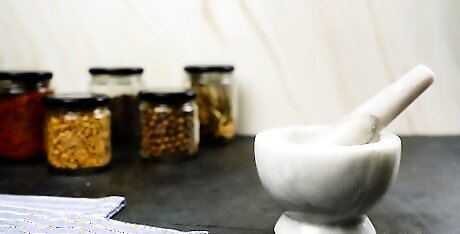
Choose a size suitable for your needs. Do you want to crush large amounts of spices, seeds, and nuts or only small amounts? Mortar and pestles come in various sizes, from the size of your palm to a bowl. A good all-purpose starter size would be a mortar and pestle that's about 6 in (15 cm) wide and 3 in (7.6 cm) deep.
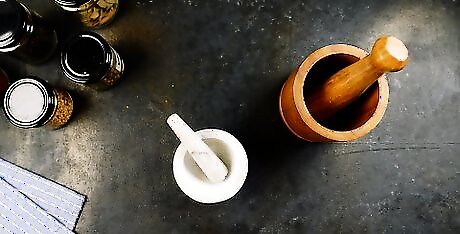
Pick the right material for your culinary needs. Mortar and pestles are usually made in a matching set. The mortar is a small bowl, and the pestle is a wand with a curve that's perfectly shaped to grind smoothly against the mortar. The instrument may be made from wood, stone, or ceramic, and you'll want to choose your material based on your needs in the kitchen. For instance: Ceramic mortar and pestles are capable of grinding spices very finely, but they're also more fragile than other types. Wood mortar and pestles are durable, but they're also slightly porous and subject to stains. It's also possible for the flavor of one spice to stay present in the mortar between uses, tainting the flavor of the next spice you grind. Stone mortar and pestles also grind very finely, but unless they're conditioned properly, fine particles of stone can get ground into the spices.



















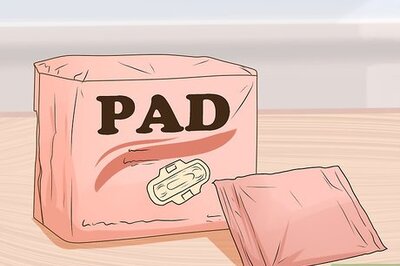
Comments
0 comment